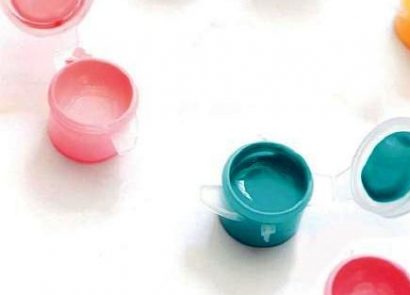It wasn’t until the tabloids named and shamed Burberry for destroying £28.6 million worth of stock that the extent of fast fashion was dragged into the public eye. It’s estimated that in the five years leading up to 2018, the high-end label incinerated £90 million of fabric, including leather and fur. It’s difficult enough for us to digest that so many animals are killed in the name of a new fluffy jacket, but to think of these materials being destroyed without a single use? We can’t see any logic behind such cruelty in the name of, well, setting things alight. News like this sways us towards opting for low-end labels, but this is also problematic. You often pay for what you get when it comes to clothes, and the chances are if your ‘perfect’ NYE get-up was only £20, then it was probably made in factories practising cheap labour and poor conditions. So, which fashion brands should we be supporting, and how can we be conscious consumers when it comes to our clothes? We’ve devised some tips for harnessing healthy habits when it comes to splashing the cash on clothing.
Green is the new black
Supporting planet-friendly brands has never been more necessary. Banning fur on catwalks has been seen as a (leather heeled) step forward for the industry, albeit long overdue. Now it’s up to us to put pressure on fashion firms to eco-fy their labels, by raising the revenue of companies committed to extending the life of materials. Organisations such as Evveervital (evveervital.com) resolve to turn by-products from the food industry into luxury fabrics. This approach eliminates the need to cultivate crops for raw materials while also dealing with the burden of existing bio-waste. “As a consumer things to look out for are products made from recycled fibres, organic cottons and quality materials,” says Isobel Rimmer, head designer at Evveervital. “Buy well-made garments that are designed with longevity in mind. Seeing past fad trends and aiming for timelessness with a purchase is a great first step.”
Never bin it
Throwing clothes away is totally unnecessary and downright illogical. The most obvious guideline to swear by when it comes to a clean and conscious wardrobe is – do not dangle that dress over the bin! If you’re unable to spruce up an item with crafty ideas, take it to a charity shop, give it to a friend or sell it for a bit of extra cash. If Christmas has hit you as hard as it’s hit us this year, you’ll be desperate for a bit of extra dough. Re-gift unwanted presents and don’t waste money in the sales on clothes you’re likely to tire of after a month or so. “The best thing you can do for the environment and your personal style is to buy high-quality clothes you love and can see yourself wearing for years to come,” explains Anushka Rees, author of The Curated Closet (anuschkarees.com). “That way, not only are you more likely to mend clothes instead of toss them, but you will also be much less tempted to buy fast fashion, because you already have everything you need.”
Make wasteful distasteful
Creating a capsule wardrobe has never been more cool – it’s so on trend to be resourceful with the select items you do buy. We’re aware it’s unrealistic (for now) to imagine the infatuation with highstreet fashion is going to disappear overnight. However, times are changing. The North Face’s ‘Clothes the Loop’ (thenorthface.co.uk) scheme allows consumers to drop off unwanted items in its retail and outlet stores, regardless of condition or brand. The materials are then repurposed for another use to extend their life cycle. Highstreet names such as H&M, Levi’s and MAC are advocates of similar schemes, all rewarding you for recycling your unwanted goods. It seems there is hope for your forlorn winter coat!
Get thrifty
Understand the potential in the fabrics you own and enhance your creative abilities at the same time. There are few greater feelings than someone asking you where your jacket is from, and you can say “oh, this old thing? I customised it myself!”. For instance, when your black jeans begin to fade, use a natural dye to bring them back to black (as miss Winehouse once put it). “By rebirthing clothes through upcycling you could create an estimated 120kg per year less co2, just by extending the life of your clothing,” claims Natalie Isaacs, founder of 1 Million Women (1millionwomen.com.au).
WORDS BY: Florence Reeves-White, Editorial Assistant




















